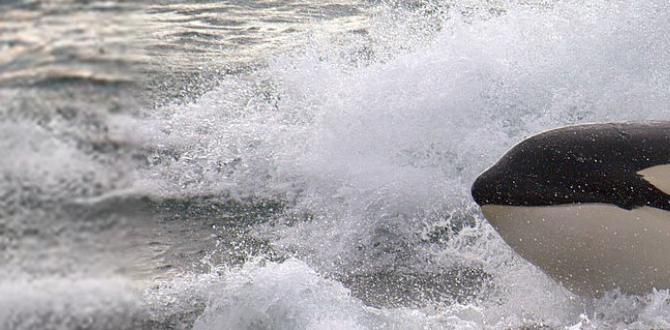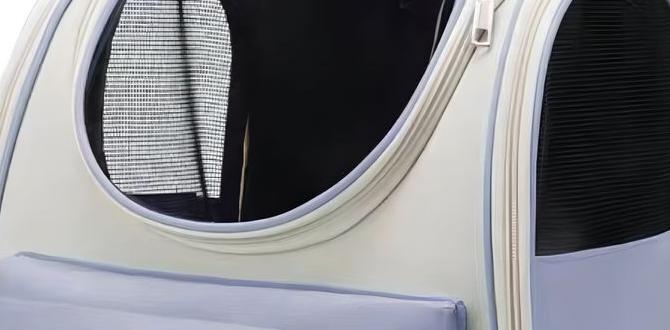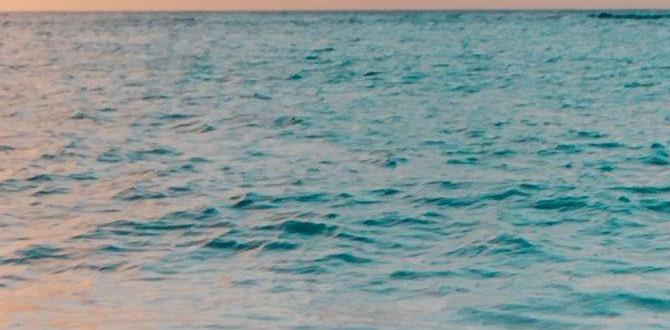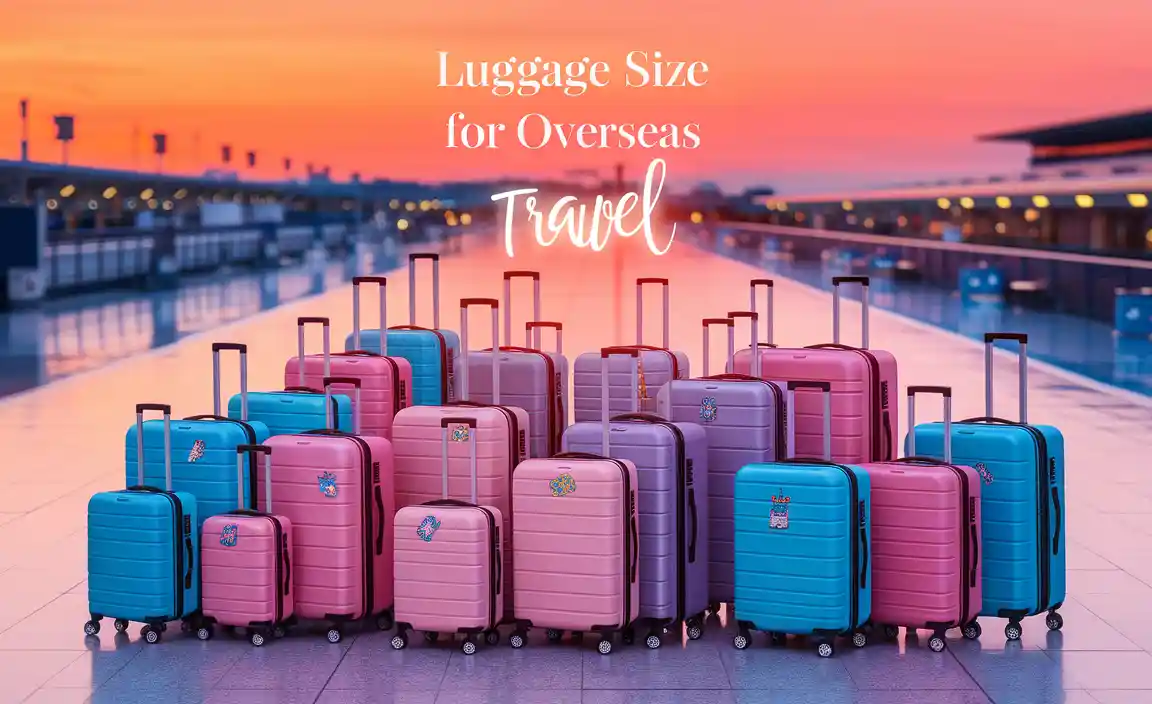Discover Algeria’s best-kept secrets with our essential guide to hidden gems. Explore ancient ruins, stunning natural landscapes, and vibrant cultural experiences off the beaten path for an unforgettable adventure.
Algeria, a country rich in history and breathtaking landscapes, is often overlooked by mainstream tourism. Many travelers flock to its more famous neighbors, missing out on the truly magical experiences that lie within Algeria’s borders.
Planning a trip to discover these lesser-known treasures can feel a bit daunting, especially if you’re looking for authentic and unique adventures. But don’t worry, this guide is here to help! We’ll walk you through some of Algeria’s most incredible hidden gems, ensuring your journey is smooth, comfortable, and filled with wonder. Get ready to uncover the heart of Algeria, from ancient wonders to serene escapes.
Why Explore Algeria’s Hidden Gems?
Algeria is a land of contrasts, boasting Sahara Desert expanses, Roman ruins that rival those in Italy, and Mediterranean coastlines that rival Greece. While places like Algiers and Oran offer a taste of Algerian life, venturing into its less-traveled corners reveals a depth of culture and natural beauty that is truly astonishing.
These hidden gems offer a more intimate travel experience, allowing you to connect with local traditions, explore ancient history without the crowds, and witness landscapes that have remained largely untouched. It’s an opportunity for genuine discovery, far from the well-trodden tourist trails.
Planning Your Algerian Adventure: Practical Tips from Journey Essentials
As Michael C. Herrera from Journey Essentials, I know that a great trip starts with smart planning, especially when exploring less-charted territories like many of Algeria’s hidden gems. Comfort and preparedness are key to enjoying every moment.
Packing for Comfort and Convenience
When you’re off to explore ancient sites or trek through natural parks, the right gear makes all the difference. Think layers, comfortable walking shoes, and essentials that keep you feeling good throughout your journey.
Clothing: Pack lightweight, breathable fabrics. Include long-sleeved shirts and trousers for sun protection and visiting religious sites. A light to medium jacket is useful for evenings.
Footwear: Sturdy, comfortable walking shoes or hiking boots are essential for exploring ruins and varied terrain.
Sun Protection: A wide-brimmed hat, sunglasses, and high SPF sunscreen are non-negotiable.
Hydration: Consider a reusable water bottle. Staying hydrated is crucial, especially in warmer climates.
Personal Comfort: For longer journeys or unexpected needs, consider personal care items that ensure comfort. For example, having access to reliable adult diapers or child diapers can remove a layer of stress, allowing you to focus on the experience, whether it’s a long bus ride through the desert or an extended exploration of a historical site. Brands likedepend or Tena offer discreet and absorbent options suitable for travel.
Navigating Algeria
Getting around Algeria can be an adventure in itself. While major cities have airports, exploring the hidden gems often involves trains, buses, or hiring a private car and driver. Booking in advance is wise, especially for longer journeys.
Algeria’s Hidden Gems: An Explorer’s Itinerary
Let’s dive into some of Algeria’s most captivating destinations that often fly under the radar.
1. Tipasa: Echoes of the Roman Empire by the Sea
Just west of Algiers lies Tipasa, an ancient Roman city nestled between the Mediterranean Sea and the Chenoua Mountains. It’s a UNESCO World Heritage site that offers a stunning glimpse into Roman North Africa, with well-preserved ruins set against a picturesque coastal backdrop.
What to See: The remnants include a magnificent basilica, a forum, amphitheater, and thermal baths. The Royal Mausoleum of Mauritania, a pyramid-shaped tomb, is also a significant nearby attraction.
Why it’s a Gem: Unlike more crowded Roman sites, Tipasa offers a sense of peace and contemplation. You can wander through the ruins, imagining life centuries ago, with the soothing sound of the waves as your soundtrack.
Getting There: Tipasa is easily accessible by car or bus from Algiers, making it a perfect day trip or a relaxing overnight stay.
2. Djemila (Cuicul): A Roman Masterpiece in the Mountains
Further inland, nestled in the hills of northern Algeria, is Djemila. This spectacular Roman-colonial city is remarkably well-preserved and boasts some of the most beautiful ruins in North Africa. It’s a UNESCO World Heritage site that feels like stepping back in time.
What to See: The site features a triumphal arch, temples, basilicas, a forum, and a theater. Its urban layout is exceptionally preserved, giving a clear picture of Roman urban planning.
Why it’s a Gem: The setting is serene and dramatic, with ruins perched on a small plateau overlooking dramatic valleys. The lack of crowds allows for an immersive experience, truly appreciating the scale and artistry of Roman architecture. The nearby museum houses exquisite mosaics found on the site.
Getting There: Djemila is best reached by car or by hiring a local guide and driver from Sétif or Constantine. It’s a commitment but utterly rewarding.
3. Gouraya National Park (Part of the larger Taza National Park): Coastal Wilderness
For nature lovers, Gouraya National Park offers a stunning stretch of rugged coastline, dense forests, and beautiful beaches. It’s a haven for biodiversity and offers a refreshing escape from the historical sites.
What to See: Hike through lush forests, discover hidden coves, and enjoy panoramic views of the Mediterranean. The park is home to Barbary macaques and a variety of bird species.
Why it’s a Gem: It provides a natural counterpoint to Algeria’s historical riches. The dramatic cliffs meeting the sea offer breathtaking vistas, and the chance to spot wildlife in a protected environment is a special treat.
Getting There: Located near the city of Béjaïa on the coast, it’s accessible by road.
4. The Vallée de la Soummam (Summam Valley): History and Serenity
The Vallée de la Soummam is a region of significant historical importance, particularly for the Algerian War of Independence. It’s also a picturesque area with fertile lands, small villages, and the Soummam River flowing through it.
What to See: Visit historical sites related to the war, such as the historic congress house in Ifri Ouzellaguen. The valley itself is beautiful for its agricultural landscapes, olive groves, and the general tranquility.
Why it’s a Gem: It offers a deeper understanding of Algeria’s modern history in a setting that is still largely untouched by mass tourism. The landscapes are beautiful, and interacting with local communities offers genuine cultural insights.
Getting There: Accessible by road from Béjaïa or Bouira.
5. El Kala National Park: Wetlands and Wildlife
Located on the northeastern coast, El Kala National Park is a vital ecosystem featuring coastal lakes, marshes, and forests. It’s a crucial stopover for migratory birds and a unique natural landscape in Algeria.
What to See: Explore the intricate network of lakes (like Oubeira and Tonga), the surrounding forests, and the coastline. It’s an excellent spot for birdwatching, with over 200 species reported.
Why it’s a Gem: This is a different kind of Algerian beauty – a rich wetland environment that is rare and ecologically significant. It offers opportunities for kayaking, hiking, and incredible wildlife photography. As a UNESCO Biosphere Reserve, its importance cannot be overstated. Learn more about the importance of biosphere reserves on the UNESCO MAB Program website.
Getting There: El Kala is accessible by road from Annaba.
6. Beni Add Caves: Subterranean Wonders
Near the town of Saïda in northwestern Algeria are the Beni Add Caves, a stunning natural formation of stalactites and stalagmites. These caves are among the largest and most beautiful in Africa.
What to See: Guided tours take you through vast caverns adorned with incredible mineral formations of all shapes and sizes, illuminated to dramatic effect.
Why it’s a Gem: It’s a magical underground world that offers a cool escape and a chance to witness geological artistry. It’s a unique experience that contrasts with Algeria’s arid desert or coastal scenery.
Getting There: The caves are accessible by road from Saïda.
7. Kalaat Beni Hammad: The Grandest Ruin (and a Hidden One!)
While Djemila and Tipasa are well-known Roman sites, Kalaat Beni Hammad is a spectacular medieval Islamic city, a UNESCO World Heritage site that often gets overlooked. It was once the capital of the Hammadid dynasty and is considered one of the most important surviving examples of early Islamic architecture in North Africa.
What to See: Explore the remains of impressive fortifications, mosques, palaces, and a grand mosque with a 77-meter-high minaret (partially standing). The scale of the city is immense.
Why it’s a Gem: Its sheer size and the quality of its ruins offer a glimpse into a powerful Islamic civilization. The setting in the foothills of the Hodna Mountains is also very scenic and far from crowded. It provides a different historical perspective from the Roman ruins, showcasing the rich Islamic heritage of Algeria.
Getting There: Located in the M’Sila Province, it’s best reached by car or with a guided tour.
Making the Most of Your Journey: Comfort is Key
When you’re exploring these incredible, often remote, locations, personal comfort can significantly enhance your experience. Whether you’re on a long bus journey to Djemila or spending hours hiking in Gouraya National Park, feeling secure and at ease is paramount.
For travelers who may require them, discreet and reliable adult diapers or child diapers are invaluable travel companions. They offer peace of mind, allowing you to fully immerse yourself in the adventure without worry. Products from brands like Abena or Tranquility are designed for absorbency and comfort, making them ideal for extended travel days.
For parents traveling with young children, having readily available child diapers means less stress during stops or in transit, ensuring everyone stays comfortable and happy. This focus on practical, everyday solutions is what Journey Essentials is all about – enabling you to travel with confidence and enjoy every discovery.
Experiencing Algerian Culture Beyond the Sites
While the historical and natural wonders are captivating, engaging with Algerian culture adds another layer of richness to your journey.
Local Cuisine
Don’t miss the chance to savor Algerian specialties. From flavorful couscous and tagines to sweet pastries and refreshing mint tea, the culinary landscape is diverse and delicious. Seek out local eateries away from tourist hubs for the most authentic flavors.
Hospitality
Algerians are known for their warmth and hospitality. Be open to engaging with locals; you might find yourself invited for tea or given directions with a smile. These interactions are often the most memorable parts of a trip.
Markets and Crafts
Explore local souks (markets) to find unique handicrafts, textiles, and spices. Bargaining is common, so friendly negotiation is part of the experience.
Essential Information for Travelers
Visa Requirements: Check the latest visa regulations for your nationality well in advance of your trip. The Algerian Ministry of Foreign Affairs website can provide official guidance.
Best Time to Visit: Spring (March-May) and Autumn (September-November) offer pleasant weather, ideal for exploring various regions. Summers can be very hot, especially in the south.
Language: Arabic and Tamazight are the official languages. French is widely spoken in business and among educated circles. Learning a few basic Arabic or French phrases will be very helpful.
Currency: The Algerian Dinar (DZD). ATMs are available in larger towns, but it’s advisable to carry some cash.
* Respectful Travel: Dress modestly, especially when visiting religious sites or rural areas. Be mindful of local customs and traditions.
Algeria Hidden Gems Guide: Quick Reference Table
To help you visualize your potential itinerary, here’s a quick look at some of the hidden gems:
| Location | Type of Attraction | Key Features | Best For | Accessibility |
|---|---|---|---|---|
| Tipasa | Roman Ruins, Coastal | Basilica, Forum, Mediterranean Views | History Buffs, Scenic Beauty | Day trip from Algiers (car/bus) |
| Djemila (Cuicul) | Roman Ruins, Mountainous | Triumphal Arch, Temples, Mosaics | Archaeology Enthusiasts, Serene Exploration | Car/Private Driver from Sétif/Constantine |
| Gouraya National Park | Nature, Coastal | Forests, Beaches, Wildlife | Nature Lovers, Hikers | Near Béjaïa (road access) |
| Djemila (Cuicul) | Roman Ruins, Mountainous | Triumphal Arch, Temples, Mosaics | Archaeology Enthusiasts, Serene Exploration | Car/Private Driver from Sétif/Constantine |
| El Kala National Park | Nature, Wetlands | Lakes, Marshes, Birdwatching | Birdwatchers, Ecosystem Exploration | Near Annaba (road access) |
| Beni Add Caves | Natural Wonders | Stalactites, Stalagmites, Caverns | Geology Enthusiasts, Unique Experiences | Near Saïda (road access) |
| Kalaat Beni Hammad | Medieval Islamic City Ruins | Fortifications, Mosques, Minaret | History Buffs (Islamic period), Off-the-beaten-path explorers | Car/Guided Tour (M’Sila Province) |
A Journey of Discovery Awaits
Algeria is a country that rewards the curious traveler with unparalleled beauty, profound history, and genuine encounters. By venturing beyond the usual tourist hotspots, you open yourself up to a world of extraordinary discoveries, from the silent grandeur of Roman ruins to the vibrant life of forgotten cities and the serene beauty of its natural landscapes.
This Algeria hidden gems guide is just a starting point. Each of these locations, and countless others not mentioned, offers a unique narrative waiting to be explored. Remember that the most enriching travel experiences often come from embracing the unexpected, staying comfortable, and allowing yourself to be fully present. So pack your sense of adventure, your practical travel essentials, and prepare to be captivated by the magic of Algeria’s hidden treasures. Your unforgettable journey begins now.
Frequently Asked Questions
Q1: Is Algeria safe for tourists?
A: Generally, Algeria is safe for tourists, particularly in established tourist areas and when traveling with reputable guides. It’s always wise to stay informed about local conditions and follow standard travel safety precautions, as you would anywhere. The U.S. Department of State, for example, provides travel advisories for its citizens. For official information, consult your country’s foreign travel advice.
Q2: What is the best way to get around Algeria to see hidden gems?
A: For reaching hidden gems, hiring a car with a driver or joining a guided tour is often the most practical and comfortable option, as public transport may not reach all these locations directly. Trains and buses are good for inter-city travel.
Q3: Can I explore Algeria independently?
A: Yes, independent travel is possible, especially in and around larger cities. However, for remote or less-visited sites, having a local guide can significantly enhance your experience by providing historical context and navigating logistical challenges.
Q4: What should I wear in Algeria?
A: Modest clothing is recommended. This includes long trousers or skirts and tops that cover the shoulders, especially when visiting religious sites or rural areas. Light, breathable fabrics are ideal for the climate. Pack a light jacket for evenings.
Q5: Are there any specific considerations for traveling with children in Algeria?
A: Traveling with children can be a wonderful experience. Ensure you pack comfort essentials like child diapers and familiar snacks. Plan for shorter travel days and incorporate activities that cater to their interests. Pharmacies in larger cities usually stock baby supplies, but it’s always best to bring a starter kit.
Q6: What kind of accommodations can I expect in these hidden gem locations?
A: Accommodation options can vary. In larger towns near these sites, you’ll find standard hotels. In more remote areas, expect simpler guesthouses or the possibility of arranging stays through local contacts or tour operators. Booking in advance is often recommended.




